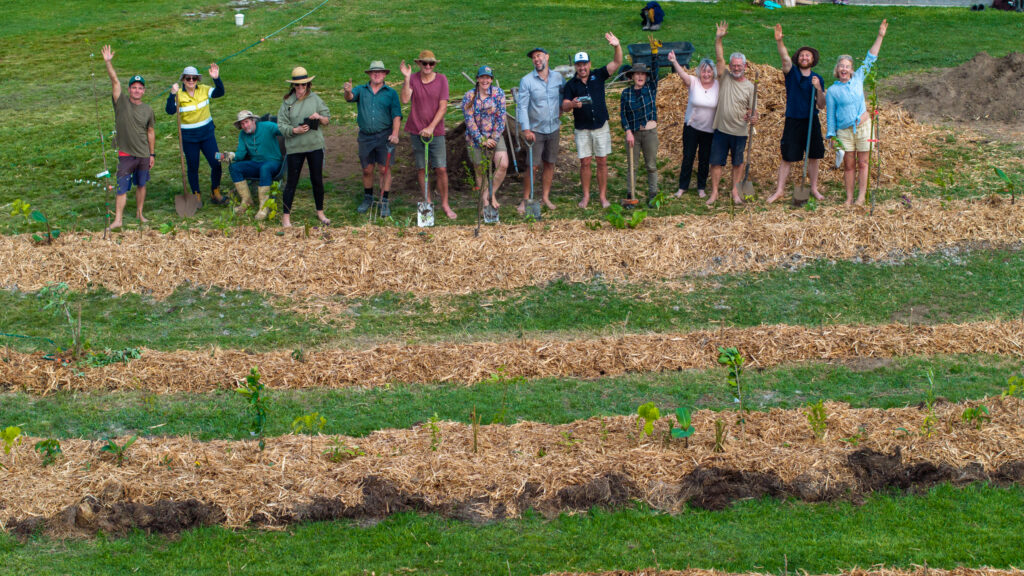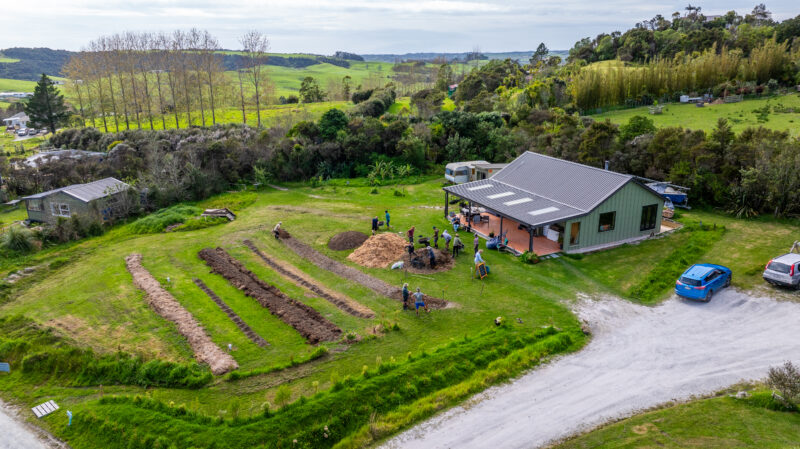You could do it alone, but why would you?
12 people joined Session 3 of the Fast Track your Food Forest series here in Mangawhai last Sunday, led by Arthur McInnes and James Andrews.
Melissa opened the day by sharing how this land found her and Mike, and expressing deep appreciation — for being here, and for the steady support Mike brings. Later, she invited us to “go slowly, with no rush.” Those simple words set the tone for the day, much as a queen bee sets the tone for her hive.
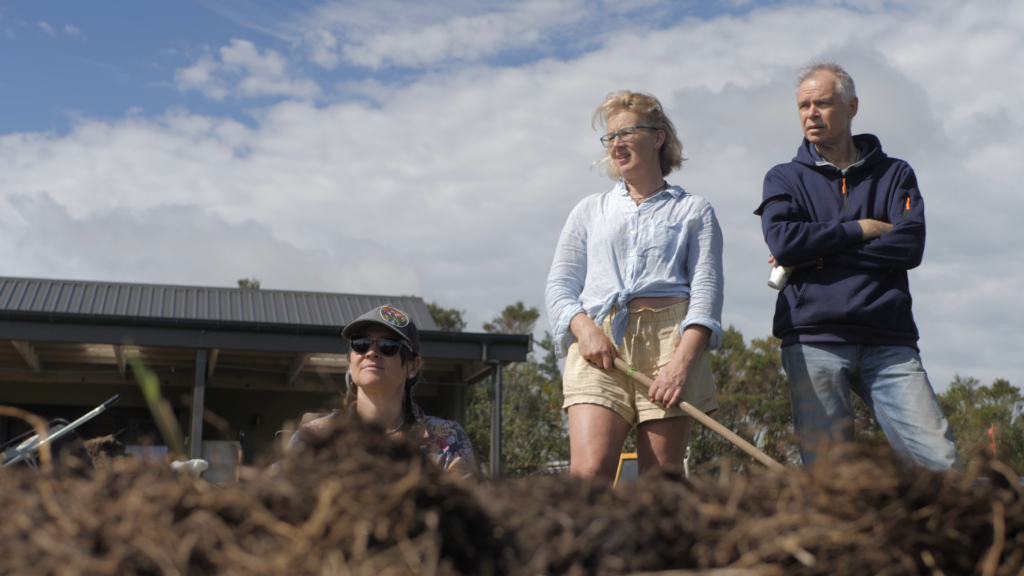
Our first task was to add sandy soil, then topsoil to each bed. Fourteen of us worked together — a living hive, each person instinctively finding their role. Looking back, what struck me was how little urge I felt to direct or manage. I was content to play my part, fully and happily trusting the collective rhythm at work.
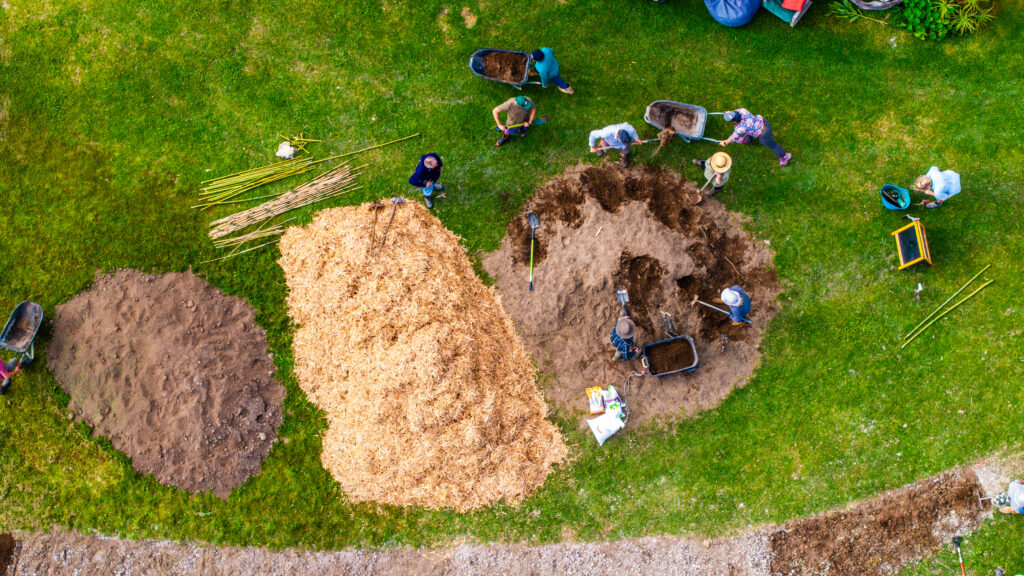
It may sound poetic, but what I witnessed was real. We achieved an extraordinary amount in a short time. Though our bodies surely felt the work, it didn’t feel like strain. It felt like a celebration.
Together, we planted the beginnings of something that, over the coming year, will transform into a thriving mosaic, each plant in its place, serving its purpose, and revealing beauty in diversity.
Syntropic Agroforestry creates such abundance and diversity that every part, including you, thrives.
The same is true in human society. When we combine our diverse skills, knowledge, experiences, interests, passions— the practical, the creative, the curious — things work better. These are the very traits that allowed Homosapiens to thrive, even as other hominids developed more strength and ability to withstand environmental extremes. When we collaborate, we see more, learn faster, and create results that are not possible alone.
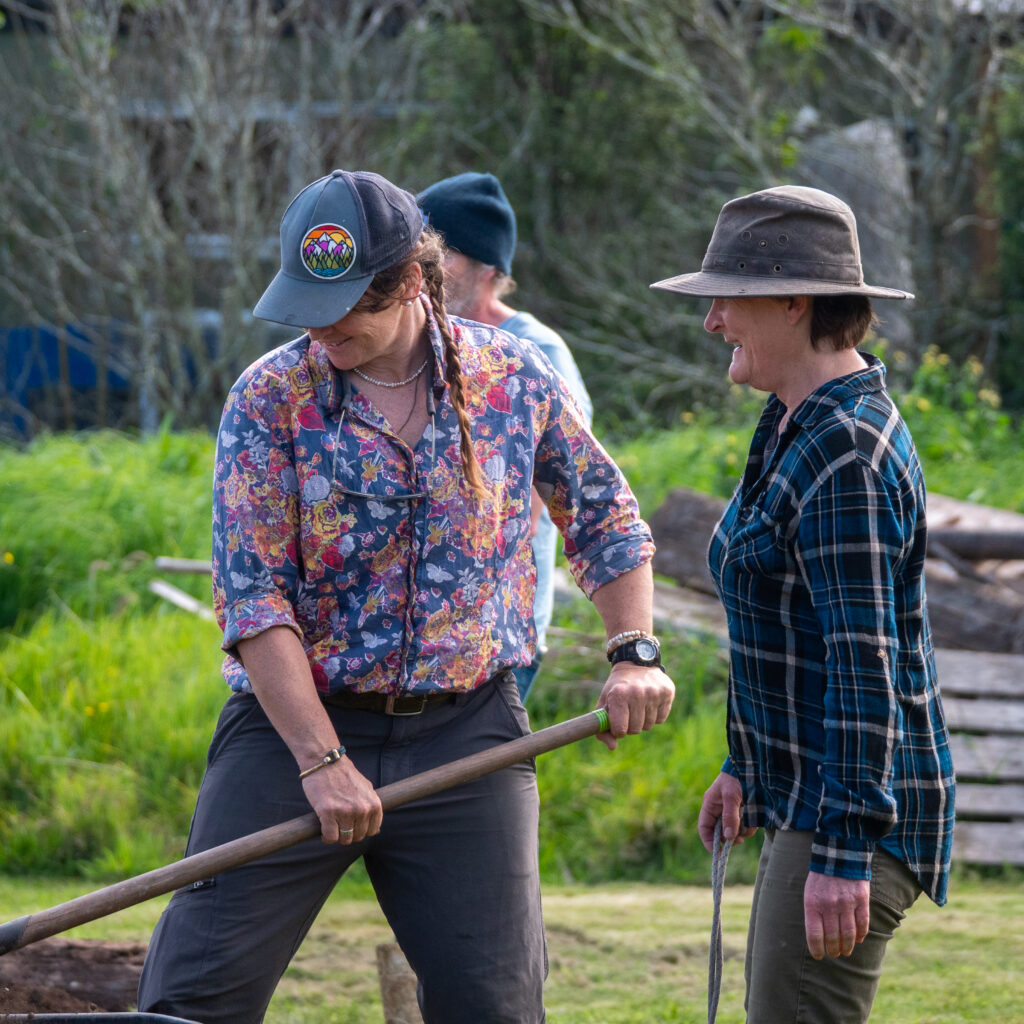
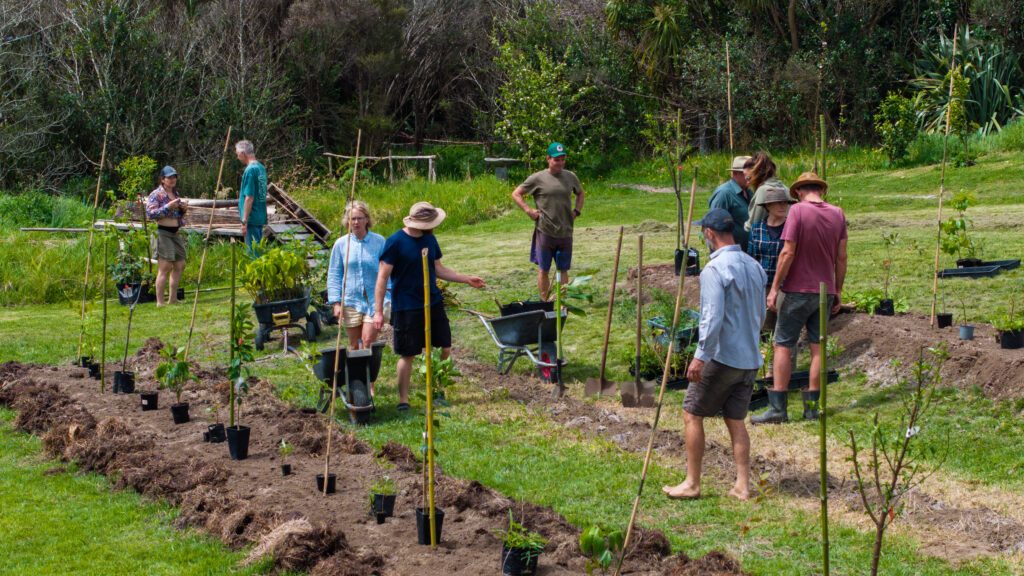
This was a day of hands-on learning about soil preparation, designing for efficiency, placement and planting, and working together as a syntropic community.
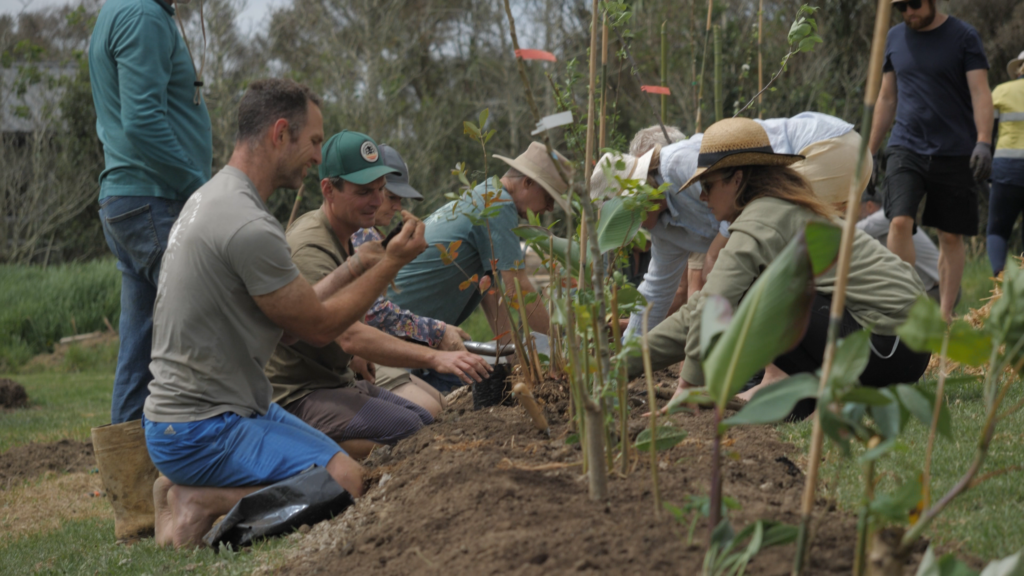
People saw what seven metre spacings between productive rows feels like, how soil prep could be done, what density and diversity look like as we put over 100 plants into each of the two 25m tree rows, and 25 Tithonia in each of the biomass rows.
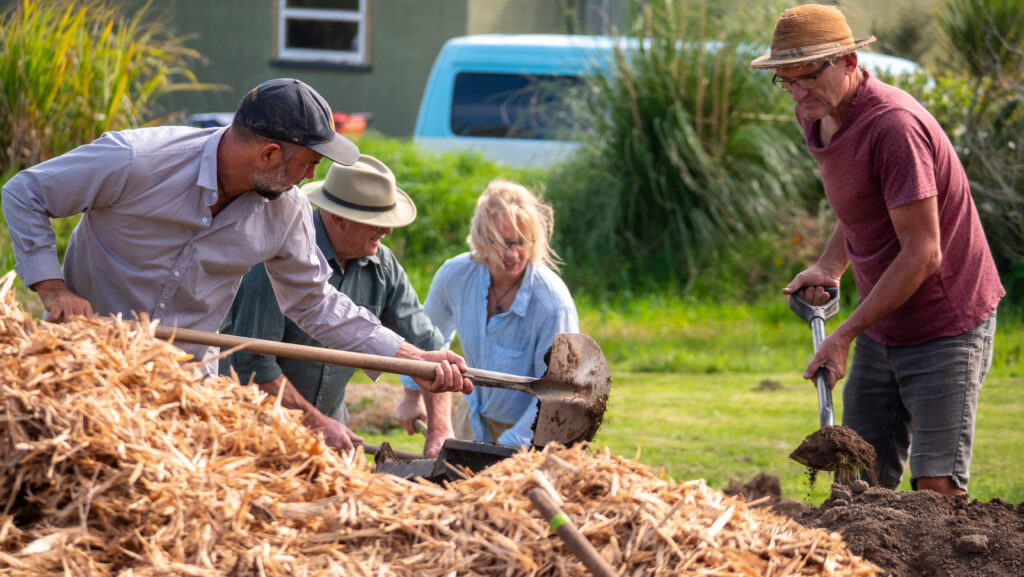
It was a lot of work which everyone here at The Nature School land are immensely grateful for. The incredible willingness of everyone to pitch in made it possible to achieve so much. Those with more experience and confidence guided others, and everyone put their muscles to work, digging, wheelbarrowing, spreading, adding soil amendments, planting and mulching.

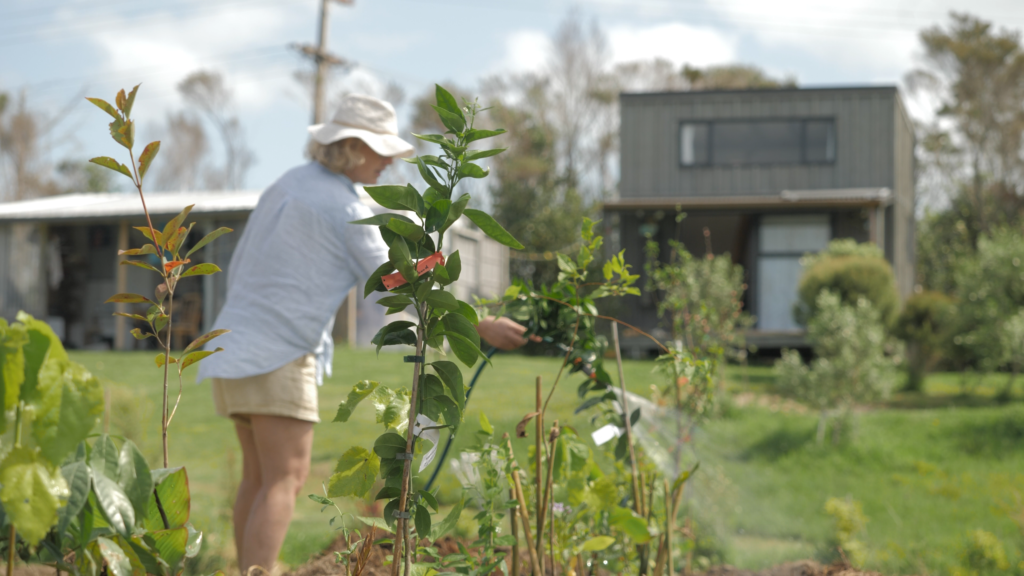
The result was that the final steps of establishing a Syntropic Agroforestry system were completed, and at last it’s looking like the early stage of a food forest.
Why did we plant in rows?
Thanks for asking. The short answer: Ease of ongoing maintenance.
There are two distinctions between Syntropic Agroforestry and the more commonly known Permaculture Food Forest:
- The speed of transition from simple (lawn in our case), into complex and flourishing forest system.
- The regular, conscious disturbance by humans (as nature, in nature), which stimulates growth.
A goal is to keep the system in growth mode, by pruning plants before they go into senescence, signalled by flowering or fruiting.
This system has three dense and diversely planted tree rows designed to produce an abundance of food, for humans, bees and birds. They have trees, shrubs and groundcover plants, spaced out so their different light requirements (strata) can be met, while also accounting for their life cycle (short through to long term).
Beside these tree rows are two biomass rows. The plants here have been selected for their vigorous growth. They will be regularly and heavily chopped back, and the biomass laid on the tree rows, to grow soil and feed the productive plants.

So planting in rows makes for easier management, and reduces the risk of inadvertently damaging (or killing) a productive tree, while chopping support species.
Why am I doing this?
Two years ago I made a note about an impulse that included these headings.
Develop syntropic agroforestry systems
- That quickly generate an abundance from annual crops planted in the early stages
- That are soon building soil and not requiring external inputs to fuel their growth
- That nourish people with nutritious food
- That nurture people as they connect with, and work in the forest
Specific ways they nurture people
- Through food for physical bodies
- With quiet natural spaces for energetic bodies
- Learning for intellectual bodies – how-to start, maintain, harvest and cook from a food forest
- Food for emotional bodies, through exchange while working together
- Discovering archetypal bodies. Finding our contribution and gift
- Regenerating Gaia, who we depend on and are part of. By capturing water, building soil carbon and soil-life, creating habitat for other sentient beings, and more.
It always surprises me how often an intention that is clarified and written down, sets in motion forces in the universe that result in it manifesting in the physical world. And I feel particularly glad for this manifestation, and the landshare experiment we are on, with the team here at The Nature School.
If you want to learn more about Syntropic Agroforestry and the trainings and events we offer, email and tell us a little about yourself, and your context. I will respond to every message. growingradicles@gmail.com
James Samuel
